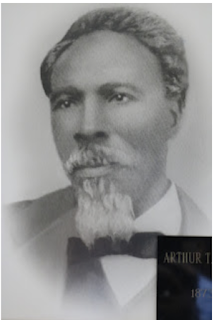In the last public speech at the White House on April 11, 1865, Abraham Lincoln called for emancipation for the entire nation.
This plan was, in advance, submitted to the then Cabinet, and distinctly approved by every member of it. One of them suggested that I should then, and in that connection, apply the Emancipation Proclamation to the theretofore excepted parts of Virginia and Louisiana; that I should drop the suggestion about apprenticeship for freed-people, and that I should omit the protest against my own power, in regard to the admission of members to Congress; but even he approved every part and parcel of the plan which has since been employed or touched by the action of Louisiana. The new constitution of Louisiana, declaring emancipation for the whole State, practically applies the Proclamation to the part previously excepted. It does not adopt apprenticeship for freed-people; and it is silent, as it could not well be otherwise, about the admission of members to Congress. So that, as it applies to Louisiana, every member of the Cabinet fully approved the plan. The message went to Congress, and I received many commendations of the plan, written and verbal; and not a single objection to it, from any professed emancipationist, came to my knowledge, until after the news reached Washington that the people of Louisiana had begun to move in accordance with it. From about July 1862, I had corresponded with different persons, supposed to be interested, seeking a reconstruction of a State government for Louisiana.
Genealogy researcher can learn a great deal from conducting genealogy research and local history research in Tangipahoa Parish about Reconstruction. In 1866 my maternal third great-grandfather Robert and his family entered into a contract with Eliza Andrews in St. Helena Parish, Louisiana to work as
tenant farmers. It was on this property that he lived with his wife, 30 years old, his son Alex Harrell, 16, his son John, 12 years old, and his two daughter Millie, 10, and Anna Harrell, 8 years old.
The vision of pioneers like Rev. Arthur Tasker, founder of the Tasker A.M.E Church in Ponchatoula. In 1872, he became the first and only African American to be elected as the Mayor of Ponchatoula. . Louisiana. The Tangipahoa Parish Color Training School was founded in Kentwood, Louisiana by Armfield Mitchell Strange. Thomas Freeman, the first African American man to purchase land in Livington Parish was a free man of color.
A man named Robert "Free" Bob" Vernon purchased thousands of acres in Tangipahoa Parish for him and his family. The land he donated for a school, church, and cemetery is the result of his generosity. The first African-American church was founded by Charles Daggs of Hammond, Louisiana in 1877. These men was among others African-American leaders in Tangipahoa Parish, Louisiana, attended meeting to improve and enhance the lives of African-Americans in the parish.
Tangipahoa Parish was formed in 1869 and Reconstruction ended in 1877. The life of American-American during Reconstruction wasn't document in the Louisiana Florida Parish. From Ponchatoula to Kentwood, Louisiana. On Wikipedia, it is written that during the period of 1877-1850; a total of 24 blacks were lynched by whites in the parish as a means of racial terrorism and intimidation.
http://www.abrahamlincolnonline.org/lincoln/speeches/last.htm



